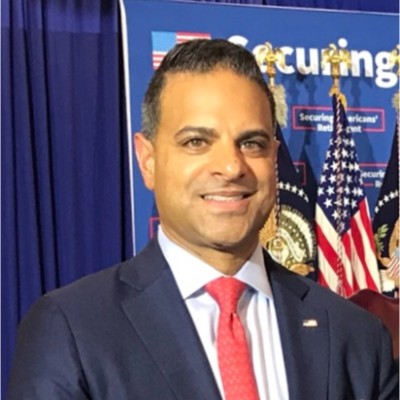Hyper-consolidation in the retirement plan space continued with the announcement in late May that Franklin Resources, better known as Franklin Templeton, would buy Putnam Investments from Great West.
Like The Standard-Securian Financial deal late last year, it attracted a lot of attention, mainly due to the high-profile nature of the brands involved.
“A significant amount of work went into this acquisition, and it took several months to orchestrate,” Yaqub Ahmed, Head of U.S. Retirement, Insurance, and 529 with Franklin Templeton, said. “When you get to the heart of the deal, it’s very much about accelerating our growth in the retirement and insurance market segments.”
It, of course, is largely about scale, and he noted the $275 billion in total retirement assets Franklin Templeton will have once the deal closes. While that figure includes defined benefit and IRA assets, defined contribution assets specifically will be “north of $90 billion” and up from the roughly $50 billion that they have now, with another $125 billion in insurance assets once the transaction closes.
“That’s a significant lift for us and incredibly complimentary,” Ahmed added. “When you think about our vast product lineup, we’ve had some voids in key DC capabilities that Putnam now brings to bear with a massive runway for growth. Their target date range has early-stage scale with strong performance and a lot of room to run. Stable value, which is an obviously very sticky asset class and an important one, is the capital preservation most widely used in DC plans. It’s not a capability for us today, but that can be up to 10% to 15% of a plan’s allocation. Putnam has an ’at scale’ stable value solution.”
Franklin Templeton will be able to look across the product and solutions continuum and think “holistically” about how it will deliver the right level of investment and client outcomes with a complete toolkit.
Technology and innovation are also significant areas of focus, specifically how the former can be used to deliver the all-important personalization which should co-exist with target date funds.
“We’ve been focused on managed account solutions and providing goals-based advice to the market through our goals-based optimization engine (GOE)," Ahmed continued. "We have also been collaborating with strategic insurance partners to launch retirement income solutions that are holistic and fully informed by data and advice. Lastly, we are a leader in alternatives with approximately $260 billion, and it’s critical that we responsibly democratize alternatives across all lines of business, including retirement. Twenty years ago, there were twice as many public companies, and retirement investors need to benefit from the broader capital markets.”
As to whether mergers and acquisitions are cooling off due to a slowing economy and more market uncertainty, Ahmed said no.
“It’s not cooling off. There’s absolutely more industry-wide consolidation to come. The reality is that there are many sub-scale financial services firms, and Putnam is an example of a firm with incredibly strong performance, investment teams, and client-facing teams. Integrating them into a large-scale organization like Franklin Templeton will create efficiencies and accelerate expansion with strategic partners that will be a multiplier of growth, which is an exciting component. Listen, this deal is expected to enhance our ability to double-down on all of our strategic partners that provide the most market reach and growth potential, which will, of course, include the partnership with the broader Power group of companies.”
Franklin Templeton believes that the American workplace is quickly becoming the new financial epicenter for most employees, a message it, and Ahmed, have conveyed recently.
“We feel strongly that this acquisition will allow us to help more households,” he concluded. “That’s ultimately what we get grounded in; who are we helping? It’s about identifying the underlying investor and helping them reach the goal of financial independence. This acquisition helps us get there with a broader toolkit and expanded resources and team in the market to execute on that.”

